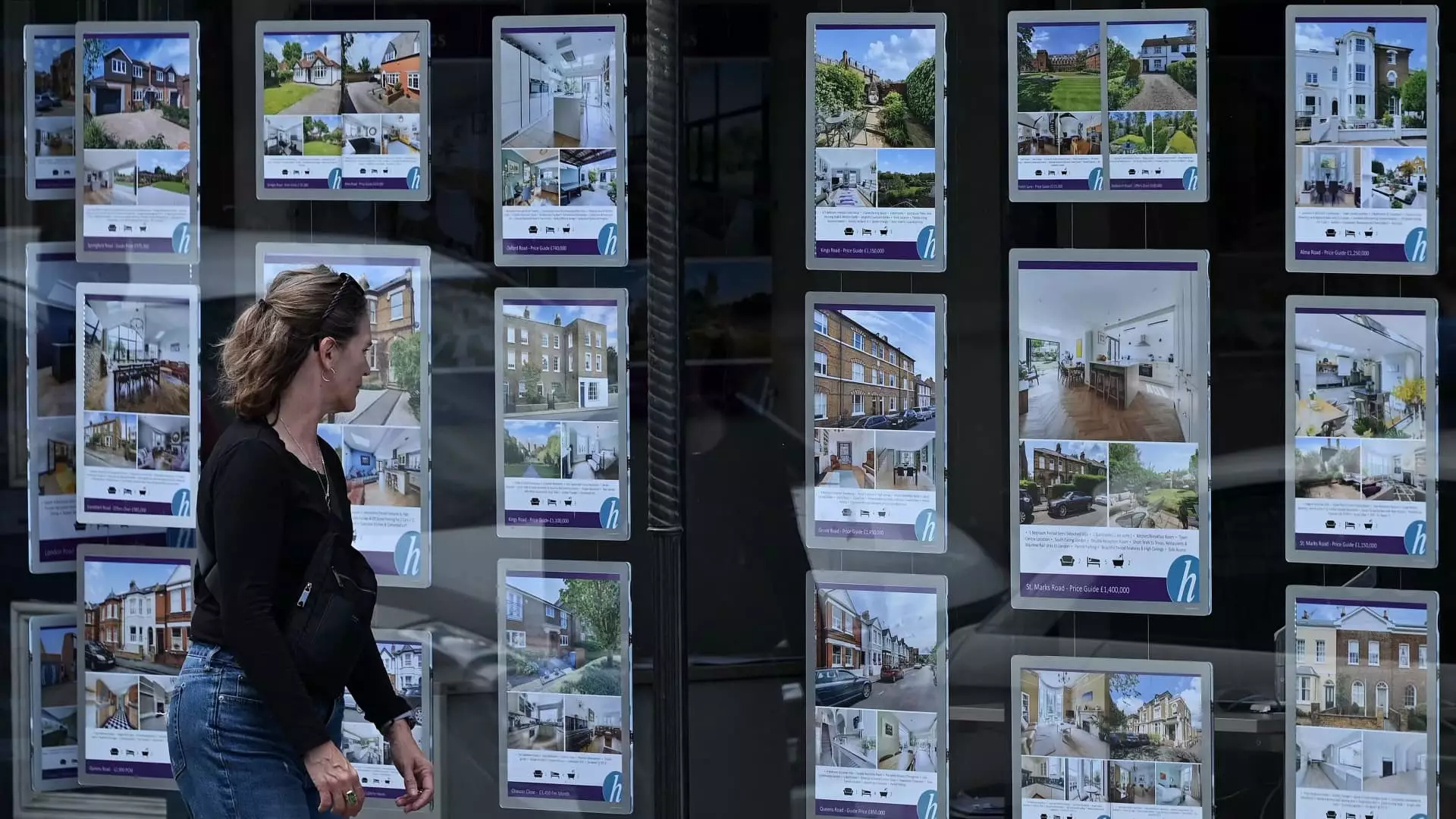Recent data reveals a noteworthy resurgence in the U.K. housing market, primarily driven by decreasing mortgage interest rates. According to property analytics from Zoopla, there has been a significant rally in home sales, rising by 25% year-over-year over the month leading up to September 22. This surge in activity represents the most robust growth since the spring of 2021. The trends suggest that potential homebuyers are regaining confidence and entering the market after a prolonged period of indecision, largely attributable to economic uncertainties experienced over the past two years.
The uptick in home buyer inquiries—recorded at a 26% annual increase—further supports the notion that the market is attracting renewed interest. The data displays a positive correlation with the performance of homebuilders; shares in companies such as Taylor Wimpey and Barratt Developments rose by 1.4% following the announcement of these figures, reflecting investor optimism about future growth.
Recent adjustments to mortgage rates show a noteworthy decrease, reaching an average of 4.57% for five-year fixed agreements, a stark decline from 5.53% observed a year prior. This downward trend is encouraging prospective buyers who have been hesitant to engage in the market. Some rate offerings have even dipped as low as 3.7%, effectively surpassing the Bank of England’s key rate of 5%. Richard Donnell, the executive director at Zoopla, emphasizes that the reduction in borrowing costs has provided a crucial boost in consumer confidence, alleviating the caution that many homeowners felt during the preceding years.
The potential for further easing in housing finance comes at a timely juncture, especially as mortgage approvals have surged to a level not seen in two years. This uptick presents a clear signal that consumers are becoming more willing to commit to home purchases. However, the market is anticipating the Bank of England’s meeting on November 7, where possible future rate adjustments will be discussed.
While the overall market exhibits signs of growth, certain regions are experiencing more pronounced shifts than others. Nationwide data highlights Northern Ireland and Scotland as leading areas for price hikes, recording annual growth rates of 8.6% and 4.3%, respectively. Conversely, London, while perceived as a slower-growth market compared to its northern counterparts, still managed to show a 2% increase in property prices. This pattern indicates a dynamic interplay between regional economic conditions and real estate demand.
Interestingly, the trend known as the “race for space” post-pandemic has influenced buyer preferences. There has been a noticeable lag in apartment sales, as many prospective homeowners prioritize space and comfort in their purchasing decisions. As landlords prepare for potential tax increases under the Labour government’s upcoming budget, anticipation of more rental properties flooding the market is likely to deter price surges in the residential sector.
Government fiscal strategies, including potential changes to taxes affecting property transactions, add another layer of complexity to the market. Finance Minister Rachel Reeves has hinted at the necessity for tax increases to address an alarming £22 billion black hole in public finances. While she has ruled out significant changes to income tax and value-added tax, capital gains and inheritance taxes remain under consideration. Such alterations could directly impact real estate transactions, either incentivizing or dissuading sales based on tax liabilities.
The impacts of proposed changes aren’t limited to traditional buyers and sellers. The anticipated adjustments in non-domiciliary tax statuses could drive behavior at the upper echelons of the market, particularly influencing ultra-wealthy individuals who may opt to relocate to more favorable tax jurisdictions. This factor could intensify movement in luxury property segments, prompting sellers to capitalize on current conditions before potential tax reforms are enacted.
The U.K. housing market is navigating a multifaceted landscape characterized by improving sales figures, decreasing mortgage rates, and looming fiscal changes. While current trends suggest a positive trajectory fueled by increased consumer confidence, ongoing regional disparities and potential tax adjustments present uncertainties that could shape the future of the sector. Homebuyers, investors, and policymakers alike will need to remain vigilant and adaptable as these developments unfold in the coming months.


Leave a Reply